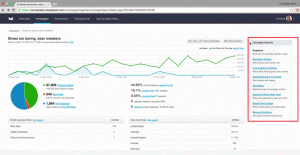
Your business has probably never moved faster. And the competition has probably never been more cutthroat. But there’s one thing that will give you a leg up in business—and that’s your data. That is, if you can stay on top of its non-stop growth and help your executives pull the right business intelligence from it. After all, your data is only as useful as the decisions that arise from its use.
Your executive team needs business intelligence they can access in a flash; not mounds of data to sift through. They need access to the information that help them make fast, informed decisions about your company’s future, while shedding light on where you’ve been. But, do you know the key areas of business intelligence your executives really care about? The ones they turn to first in a moment of decision?
Four Key Performance Areas
If you’re just getting started, allow us to provide you a shortcut. It doesn’t matter your industry—following are the four main areas of business intelligence any executive needs to know to run a company.
- Financials. It’s a no brainer—your executives care about making money, hitting goals and capturing market share. First, make sure they can easily access revenue projects versus actual growth. They may even want this information drilled down by product, industry or client. They’ll also want an instant understanding of your profit margins, as the dips and valleys there give critical insights into the overall health of your business.
Other financial elements to track: expenses—how much money is going out? And, don’t forget about stretch goals—these are major drivers for innovation and long-term changes within a company. Your executives probably also want to know a few more nitty gritty details, like profit per customer, growth rate and customer retention rate.
- Customer Satisfaction. Your customers’ happiness and perception of value impacts everything—from the number of customer service calls you receive to your product recommendations in the market. What is your complaint rate? Return rate? Customer satisfaction survey results? And, what are customers saying about their desire to recommend you to their friends and family?
- Market Perception. First, do people in the market (the ones you care about) even know who you are? In other words, what’s your brand awareness like these days? How do customers emotionally connect with you—do they view you positively? How do your customers (and potential customers) engage with you? Is social media playing a positive role in customer acquisition?
- Productivity. Strategy is great; execution is better. How are your business units accomplishing their goals—what’s the percentage of completion to each departmental goal? Is inventory matching production? Are customer quoted deadlines being met? Are your employees happy? This category may even include stats like employee retention numbers.
Start With the Metrics
Give executives the information they need and want. These four focus areas are the core components of any executive’s decision-making toolbox. If you’re not hitting these areas in your executive dashboard then you’re not empowering your team with the BI they need to do their job and manage the business. Use these recommendations as a launch pad for revamping your executive dashboard, and then customize it with recommendations across the executive team.
Business & Finance Articles on Business 2 Community(58)
Report Post








